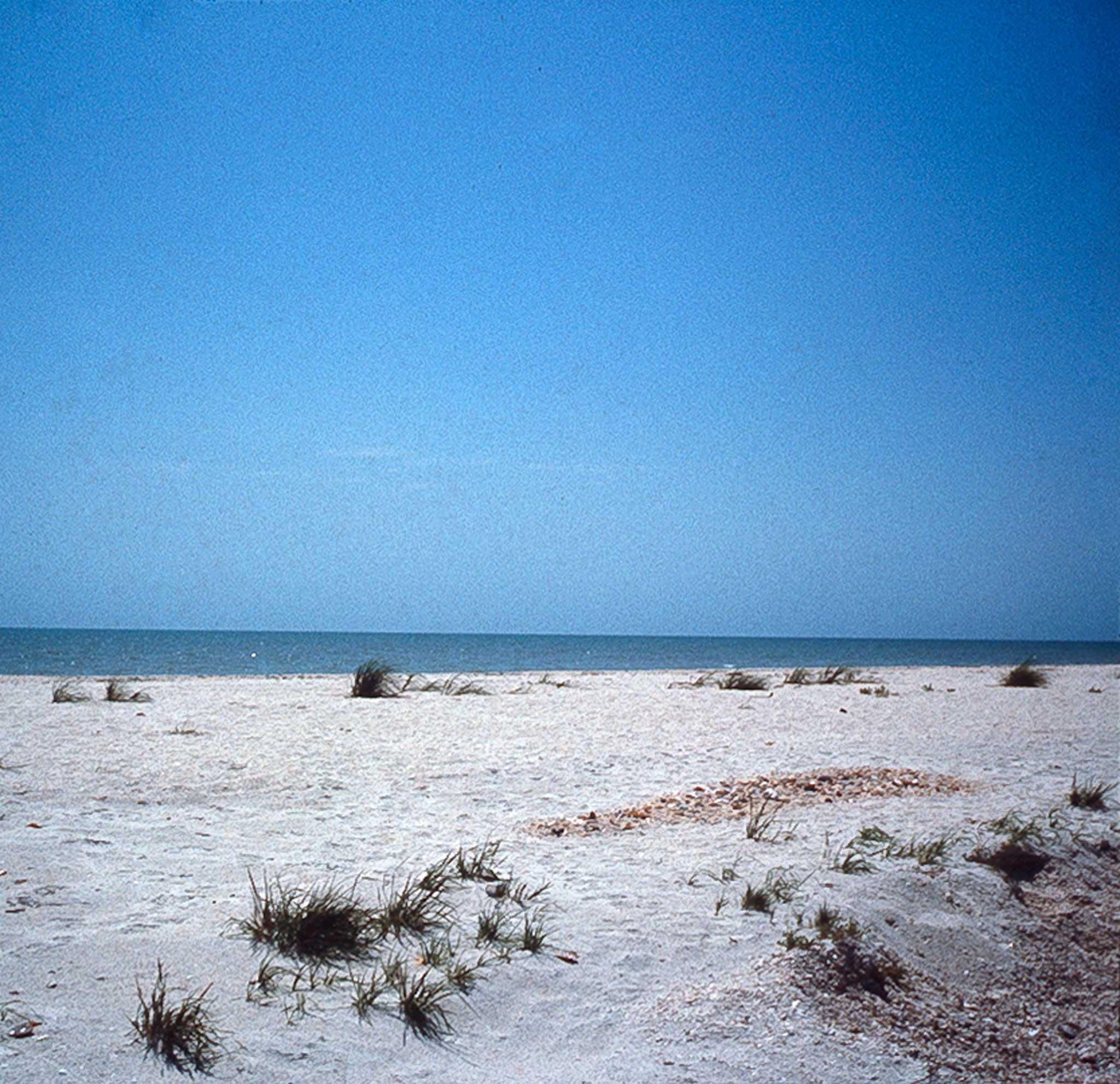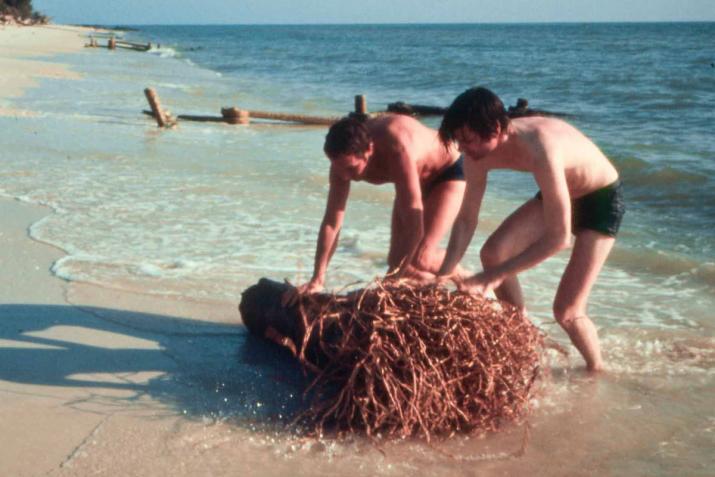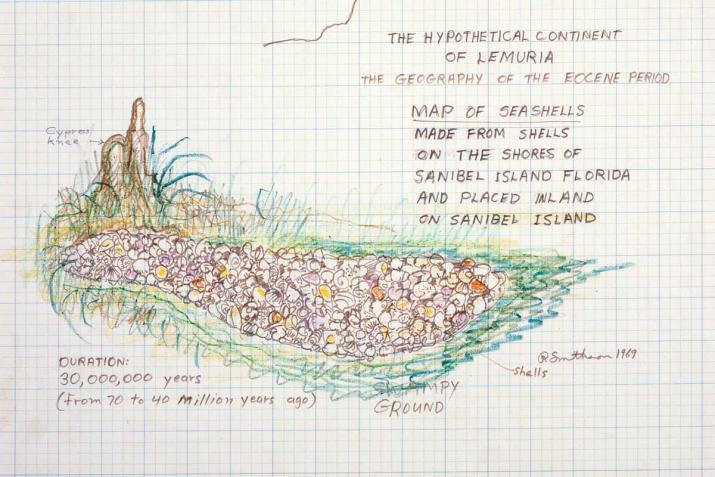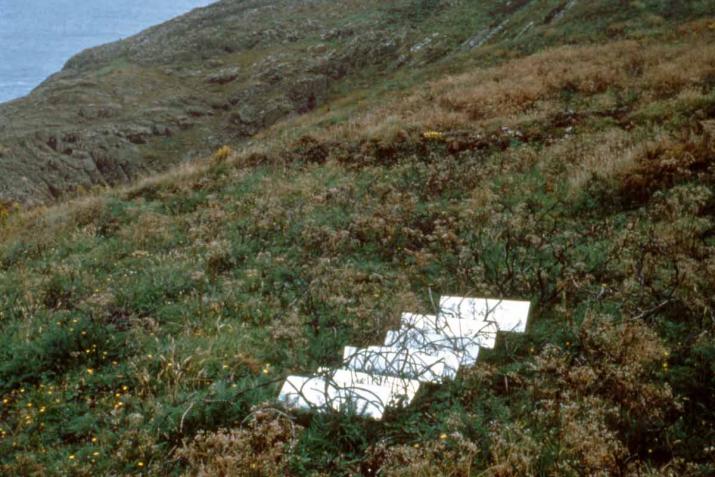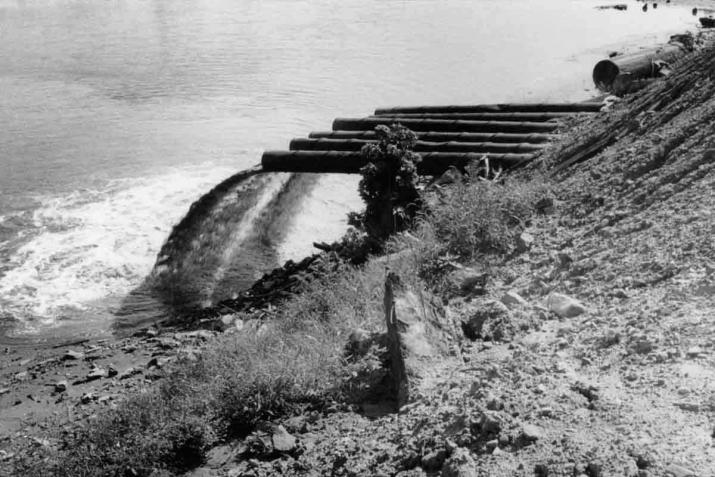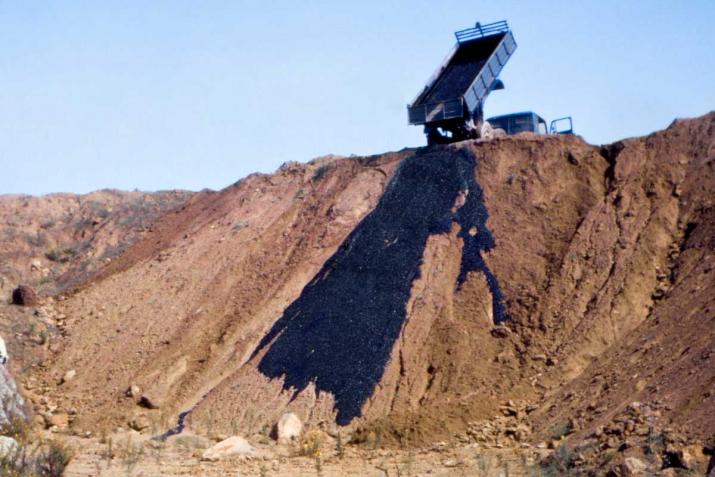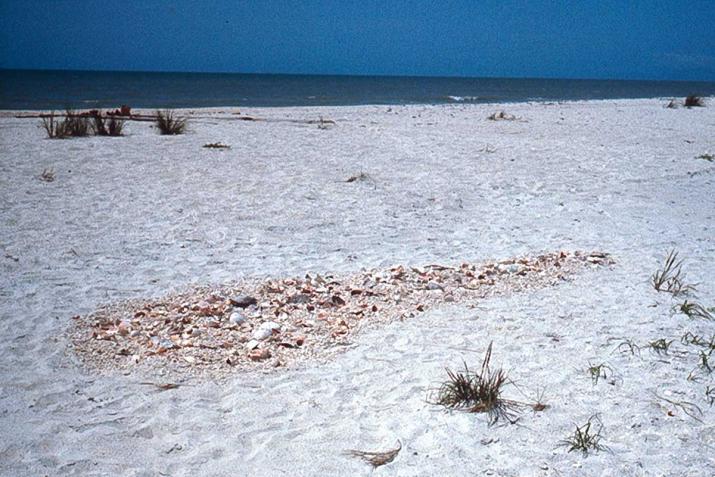
Florida, Man: Robert Smithson’s Hypothetical Continent in Shells: Lemuria
Before sunrise on an already soupy Monday in mid-August 2023, scores of white contractor pickups from mainland Florida clogged the causeway bridge onto Sanibel, a narrow, crescent barrier island curving twelve miles along the Sunshine State’s southwestern Gulf Coast. Ten months earlier, Hurricane Ian had thrashed the island, leveling homes and businesses, disemboweling infrastructure, and clobbering complex, verdant ecosystems filled with alligators, marsh rabbits, black racer snakes, river otters, iguanas, gopher tortoises, and legions of bird species.


